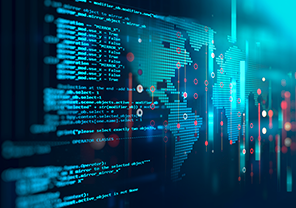TED University Software Engineering Department research interests mainly focus on artificial intelligence, machine learning, big data analytics, cloud computing, internet of things, software security, cyber security, database systems, distributed systems, software verification and testing, user experience and interface design, bioinformatics, game development and cognitive sciences. The table below shows the active research interests of our faculty members.
| Faculty Member | Active Research Topics |
|---|---|
| Prof. Dr. Tansel Dökeroğlu | Parallel Computing, Discrete (Multi-Objective) Optimization, Metaheuristic Algorithms, Parallel Machine Learning Algorithms, Feature Selection, Big Data Analytics |
| Prof. Dr. Kasım Murat Karakaya | Natural Language Processing, Image Processing, Optimization, Machine Learning, and Natural Computing Algorithms |
| Dr. Öğr. Üyesi Özlem Albayrak | Software, Software Engineering |
| Dr. Öğr. Üyesi Emin Kuğu | Computer Science, Information Security and Reliability, Cryptology, Software Security, Computer Networks, Communication and Network Protocols, Database and Data Structures, Fuzzy Sets and Systems, Neural Networks, Software Engineering |
| Dr. Öğr. Üyesi Ulaş Güleç | Augmented Reality, Virtual Reality |
| Dr. Elif Kurtaran Özbudak |
| Artificial Intelligence, Machine Learning, Deep Learning, Natural Language Processing |

|
Artificial Intelligence (AI) and Machine Learning (ML) are among the pioneers of modern technology, revolutionizing various fields. These two domains enable computer systems to learn from data, make predictions, and solve complex problems. Artificial Intelligence (AI): AI aims to make machines exhibit human-like intelligence. It encompasses various subfields, including natural language processing, image recognition, robotics, and decision-making systems. AI applications are increasingly integrated into daily life, driving innovations in industries such as healthcare, education, entertainment, and manufacturing. For instance, in the healthcare sector, AI is utilized for early disease diagnosis, optimization of treatment plans, and enhancement of patient care. Machine Learning (ML): ML enables computers to learn from experience and improve their performance without explicit programming. It is particularly powerful in big data analytics, predictive modeling, and pattern recognition. This technology is widely applied in sectors ranging from fraud detection in finance to customer behavior analysis in retail. Additionally, ML plays a crucial role in the development of autonomous vehicles and personalized recommendation systems. Deep Learning: A subfield of machine learning, deep learning is highly effective in solving problems that require large amounts of data and high computational power. Leveraging artificial neural networks, deep learning has achieved groundbreaking results in areas such as image and speech recognition, natural language processing, and autonomous systems. Natural Language Processing (NLP): Natural language processing enables computers to understand and process human language. NLP is used in applications such as language translation, sentiment analysis, chatbots, and text summarization. This technology provides significant advantages in areas such as customer service, content management, and information retrieval. Image Processing: Image processing focuses on the analysis and manipulation of digital images. It is widely utilized in medical imaging, facial recognition, industrial automation, and security systems. This technology enables precise and rapid analysis, often surpassing human capabilities in accuracy and efficiency. These fields, empowered by the vast potential of AI and ML, are transforming both daily life and industrial processes. As these technologies continue to advance, we can expect the emergence of smarter, more efficient, and user-friendly systems in the future. |
| Researchers: Prof. Dr. Tansel Dökeroğlu, Prof. Dr. Kasım Murat Karakaya |
Relevant Courses: |
| AAugmented Reality, Virtual Reality |
 |
Augmented Reality (AR) and Virtual Reality (VR) are innovative technologies that transcend the boundaries of the digital world, redefining our perception of reality. These technologies provide immersive and interactive experiences by extending beyond the physical world. Augmented Reality (AR) Virtual Reality (VR) Applications A Future Beyond Reality |
| Researchers: Dr. Öğr. Üyesi Ulaş Güleç |
Relevant Courses: |
| Network Security, Cybersecurity, Computer Networks |
 |
Network security is a critical component of the modern digital world, encompassing various technologies and practices to ensure data integrity, confidentiality, and availability. This field aims to protect individuals and organizations from cyber threats by developing defense mechanisms against unauthorized access and malicious activities. Network Security Cybersecurity Encryption Firewalls Intrusion Detection and Prevention Systems (IDS/IPS) Virtualization and Cloud Security Malware Analysis and Prevention These aspects highlight the broad scope and significance of network security. A secure network infrastructure is the foundation of the digital world, requiring advanced technologies and evolving strategies to counter emerging cyber threats. As technology progresses, future developments in network security will lead to more resilient and robust digital systems. |
| Researchers: Dr. Öğr. Üyesi Emin Kuğu |
Relevant Courses: |
| Big Data Analytics |
 |
In the rapidly expanding ocean of data in the digital era, rather than getting lost, big data analytics serves as a guiding light, transforming raw data into valuable insights. This powerful tool enables the identification of patterns, trends, and meaningful information within massive datasets. These analyses help businesses make strategic decisions, facilitate groundbreaking discoveries in scientific research, and contribute to societal well-being. Definition of Big Data Analytics Applications Business: Helps analyze customer behavior, optimize marketing strategies, enhance operational efficiency, and gain a competitive advantage. |
| Researchers: Prof. Dr. Tansel Dökeroğlu |
Relevant Courses: |
| Software, Software Engineering |
 |
Software engineering plays a crucial role in ensuring software quality, which directly impacts performance, reliability, and user satisfaction. Software quality processes involve various methodologies and practices applied throughout the software development lifecycle to maintain high standards. Requirements Analysis Design Coding Testing Unit Testing – Verifies individual components. Maintenance and Support Bug Fixes – Addressing software defects.
Continuous Integration and Continuous Deployment (CI/CD) Continuous Integration (CI): Ensures developers integrate code changes frequently, maintaining software consistency. These processes help maintain high-quality standards in software engineering, ensuring sustainable and efficient software solutions. By integrating quality assurance measures, software meets user expectations, remains reliable, and performs optimally. As technology advances, software engineering processes will continue to evolve, leading to enhanced quality and efficiency in software development. |
| Researchers: Dr. Öğr. Üyesi Özlem Albayrak |
Relevant Courses:
|